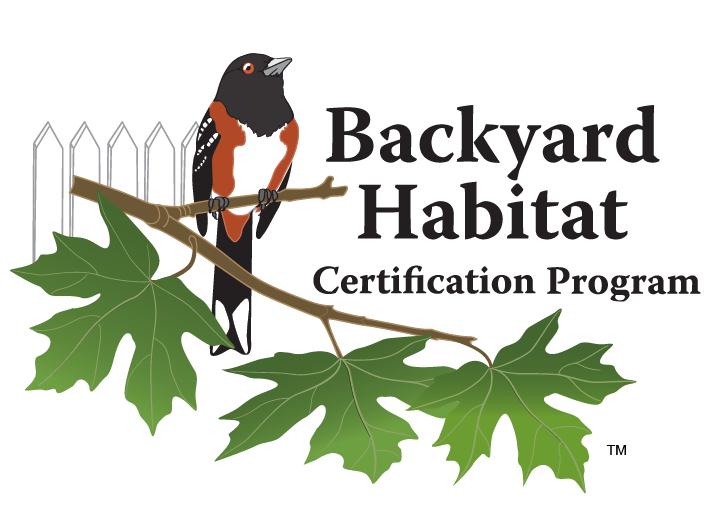Written By: Anne Ternes
- Scientific Name: Athyrium filix–femina
- Canopy Layer: Small Shrubs & Ferns
- Attracts: Insects, Birds and Small Mammals
- Portland Plant List: Yes!
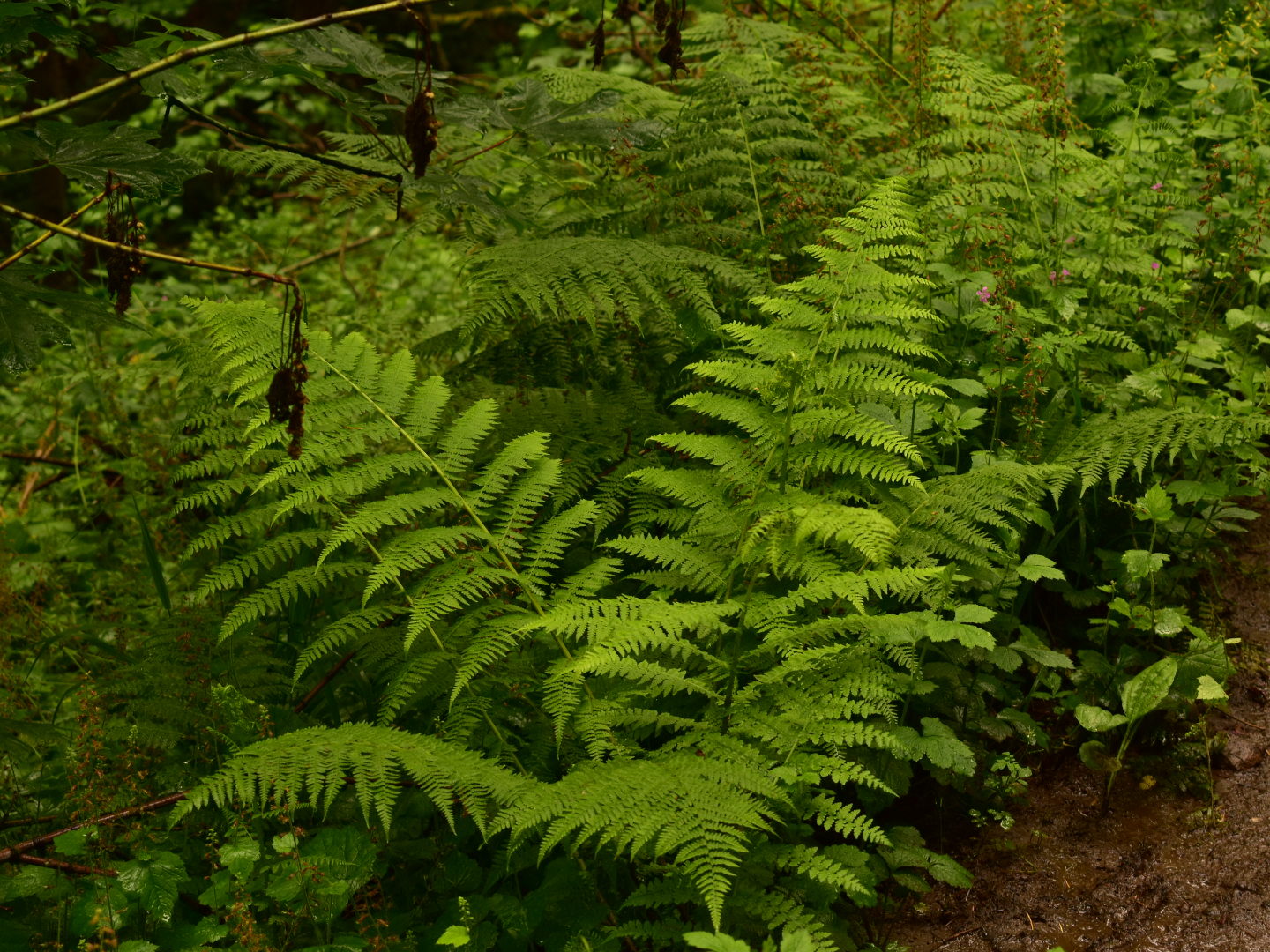
Lady fern is a tall, broad-leaved fern that grows in the forests and riparian areas of the Pacific Northwest. Lady fern’s spring growth provides food for many insects and snails, while the leaves provide shelter for birds and mammals in the summer and fall. Throughout the year, lady ferns stabilize soils and reduce erosion. And while they do all this, they are effortlessly majestic and reminiscent of a time when they provided for dinosaurs rather than mammals.

Lady fern grows in native habitats across the northern hemisphere. They prefer temperate woodlands but are adaptable to cooler climates, with one subspecies (Athyrium filix-femina ssp. cyclosorum) even making its home in the subarctic of Canada and Greenland. Within the United States, the lady fern is native to ecosystems in every state except Hawaii. Within the Portland-Vancouver metro area, lady ferns grow in forests and riparian areas, forests adjacent to rivers, streams, and wetlands. Within these two habitats, they prefer wet soils, ranging from moist to perennially wet. They do not grow well if their roots are submerged. Lady ferns, unlike many of our common native ferns, can thrive in full sun as long as the soil is moist. Got some ideas on where to incorporate lady ferns? Great! Here are some more: plant lady ferns as groundcover around trees, a new texture in a shade garden, a border plant along a shady path, or add a few to the border of a pond or rain garden or in low-lying areas that regularly flood.
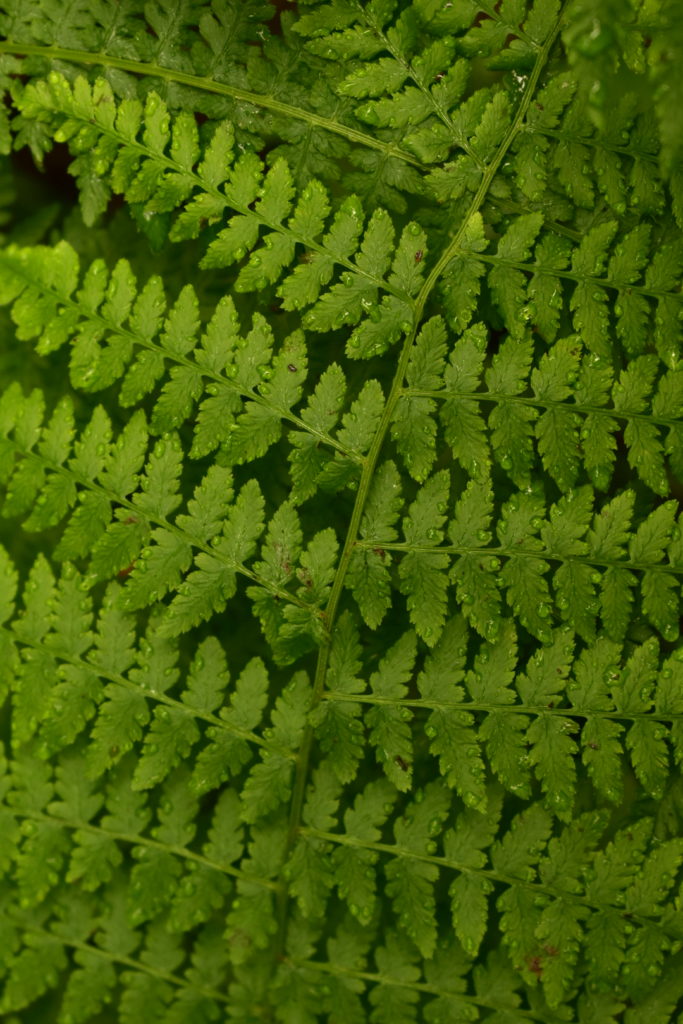
Lady ferns, along with other PNW native ferns, offer fantastic three-season interest. They are their most dynamic in the spring, when fiddleheads, new, coiled leaves, first begin sprouting. Looking like the spiral, brown-scaled tentacles of an alien creature, they are a reminder of the prehistoric origins of ferns. As spring progresses, the fiddleheads unfurl into recognizable fern fronds, though petite. The fronds continue to grow throughout the season, forming an appealing diamond silhouette. Unlike other plants, ferns do not appear to change or develop as the growing season progresses; they do not produce flowers or fruits or present fall colors. However, if you were to turn a lady fern’s leaves over during the summer months, you will find the curved, kidney bean or horse-shoe shaped spores that are characteristic of lady ferns. These spores develop throughout summer, turning a deep, earthy brown at maturity. After the spores are released, the green leaves persist deep into fall, providing beautiful contrast to the shrubs and trees that bear a backdrop of fall colors.
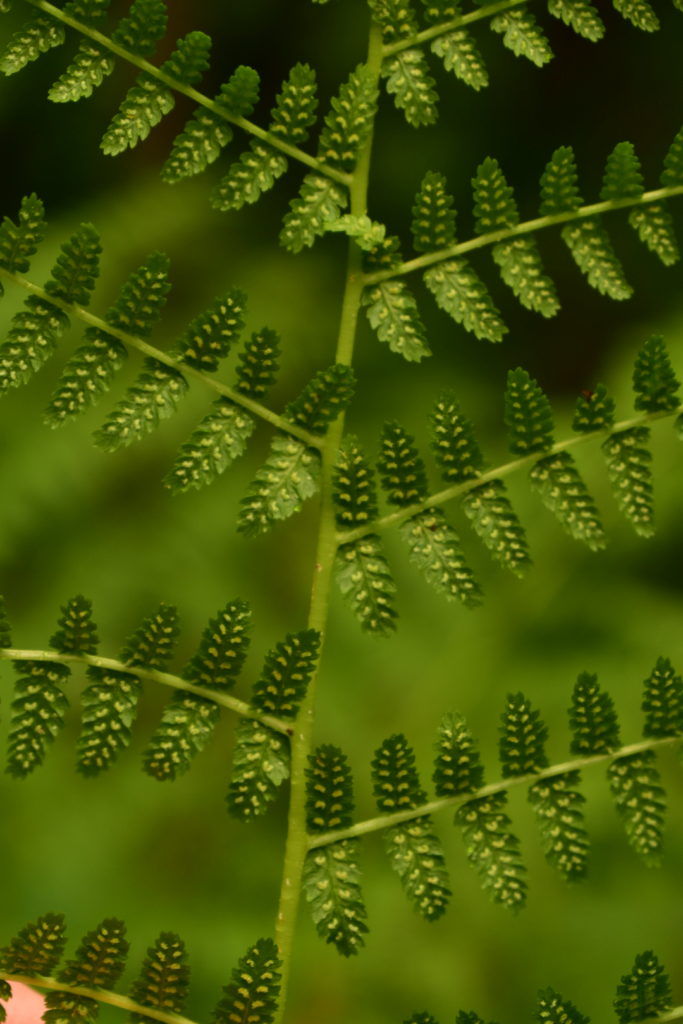
Lady fern, as it is a fern, is placed in the small shrubs and ferns vegetation layer. It is one of our area’s largest ferns, reaching up to four feet tall at maturity, making it great cover for birds and small mammals that forage on the ground. Fiddleheads are often a food source for insects, such as grasshoppers, and snails. As the fiddleheads unfurl into fronds, they produce toxins that deter most herbivorous invertebrates from eating them. These toxins may also be why lady ferns are resistant to grazing by deer and rabbits. If you struggle with these herbivores, consider planting lady ferns as succession plants to those that attract deer and rabbits. Thanks to their rhizome root systems, lady ferns are important soil stabilizers. In addition, the broad coverage of their leaves helps reduce the impact of rain on the ground. Consider planting lady ferns in areas that experience soil erosion due to heavy rains and runoff or around shrubs to increase foraging areas for birds.
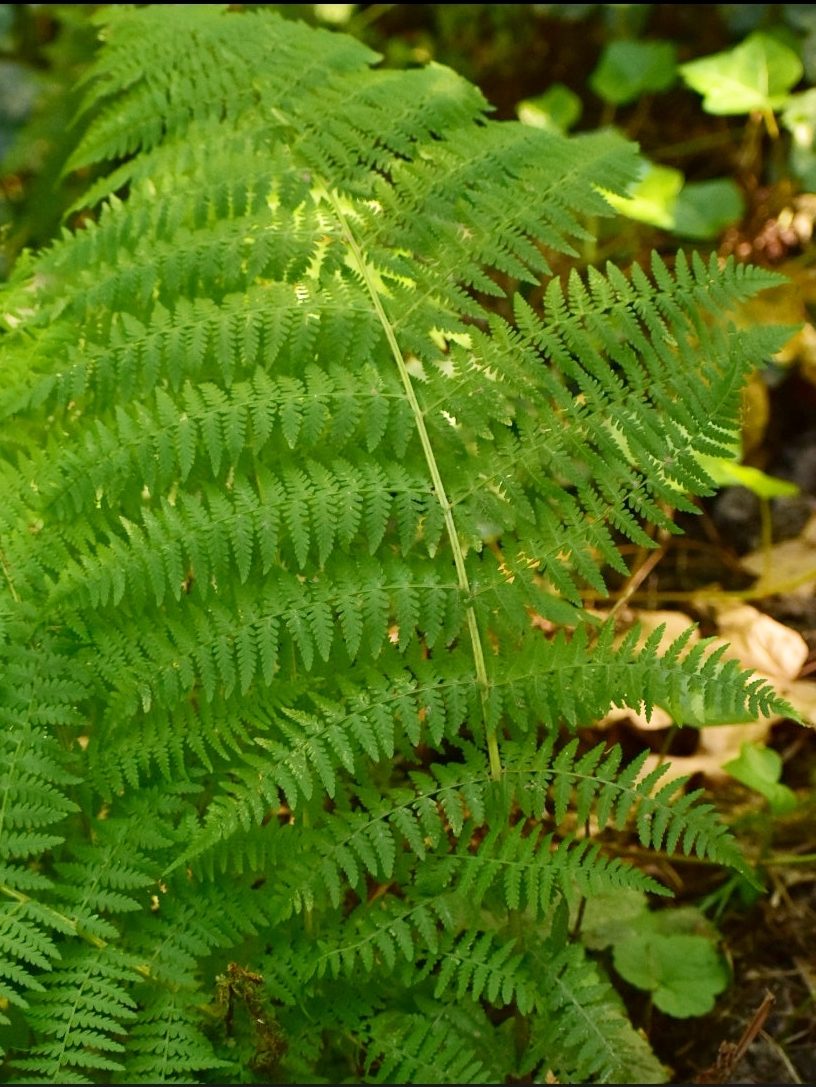
Ready to start adding lady ferns everywhere? It’s as easy as taking a trip to one of your local garden stores or nurseries. A word of caution, there are cultivars of lady fern out there, notably dwarf lady fern and “Lady in Red.” To stay true to native habitat, plant non-cultivar ferns. Once you have one or many lady ferns in hand, getting them established is easy; they root down readily and grow quickly as long as they have enough moisture in the soil. For this reason, plant them in the spring or fall, avoiding the summer’s dry months. Lady ferns may spread but are easily split by cutting the rhizome connecting them. Add your split fern to a new area, take it to a community plant exchange, or gift it to a neighbor; by doing this, you are adding to the beauty and value of your community.
Sources:
- “Athyrium filix-femina.” minssouribotanicalgraden.org. Missouri Botanical Graden. https://www.missouribotanicalgarden.org/PlantFinder/PlantFinderDetails.aspx?kempercode=b630
- “Athyrium filix-femina.” plants.ces.ncsu.edu. North Carolina State Extension, NC State University, N.C. A&T State University. https://plants.ces.ncsu.edu/plants/athyrium-filix-femina/
- “Athyrium filix-femina (Lady Fern).” minnesotawildflowers.info. Minnesota Wildflowers. https://www.minnesotawildflowers.info/fern/lady-fern#nav
- Portland Plant List. Bureau of Planning and Sustainability, City of Portland, Oregon. 2016. Pgs. 3.13-1, 3.13-2. https://www.portland.gov/sites/default/files/2018-12/Portland_Plant_List_2016_Update_Final2.pdf
- Proudfoot, Beatrice, Brietzke, Chandra, and Starzomski, Brian. “Lady fern, subarctic lady fern – Athyrium filix-femina ssp. cyclosorum.” centralcoastbiodiversity.org. The Starzomski Lab, University of Victoria Environmental Studies, Hakai Science on the Coastal Margin. 2016. https://www.centralcoastbiodiversity.org/lady-fern-bull-athyrium-filix-femina-ssp-cyclosorum.html
